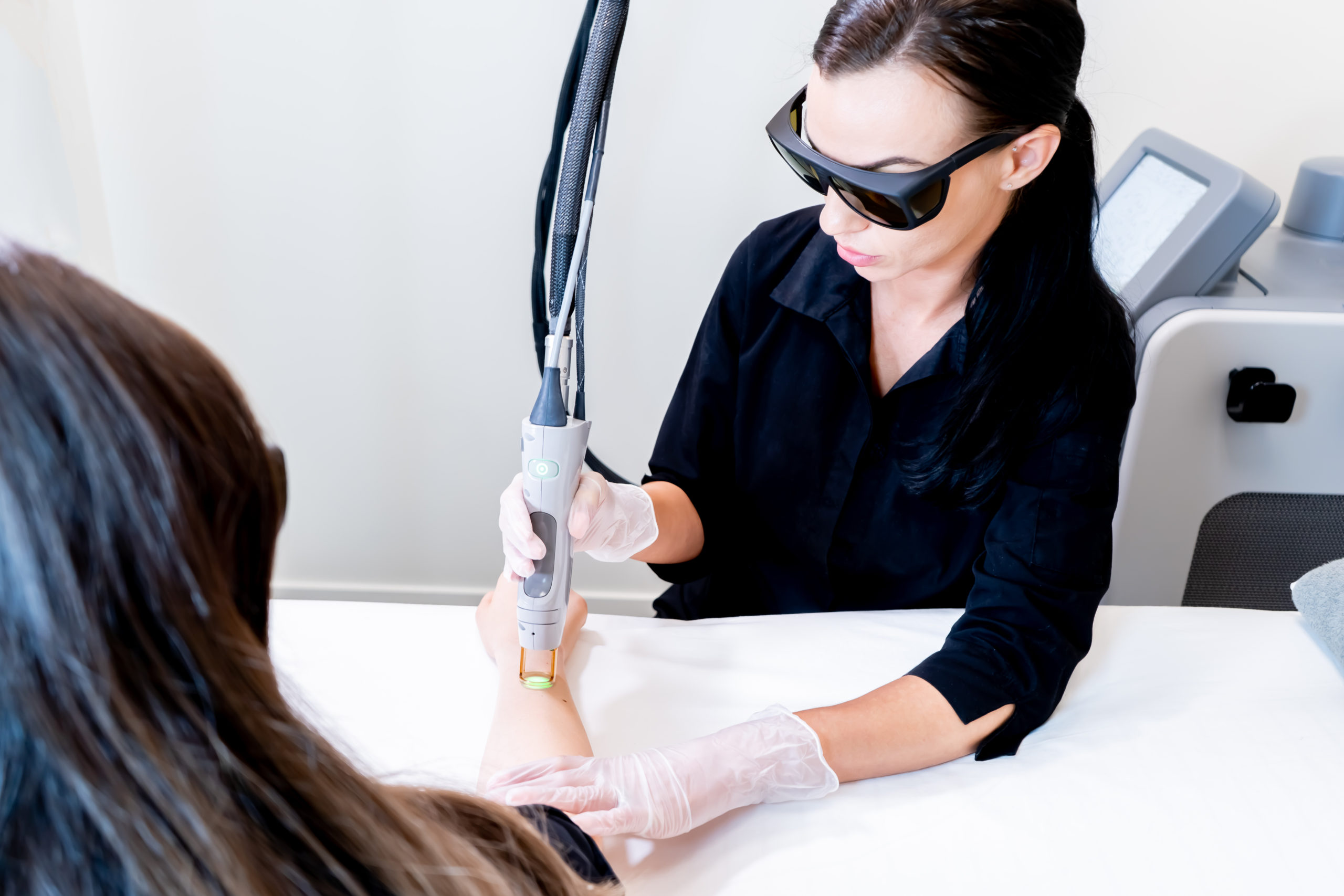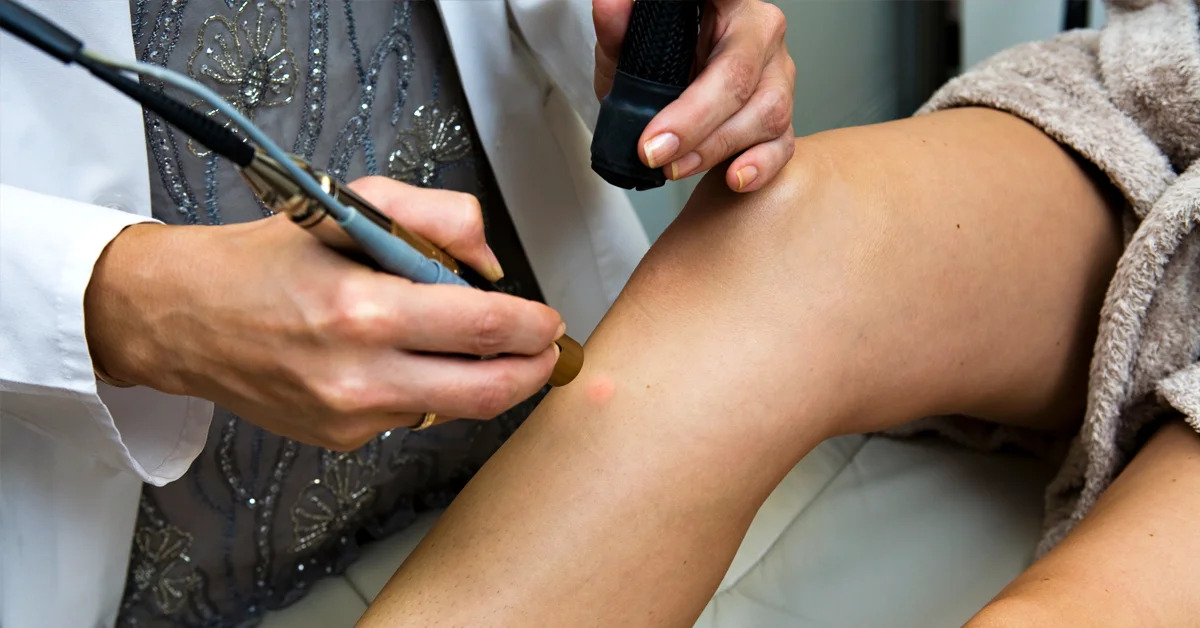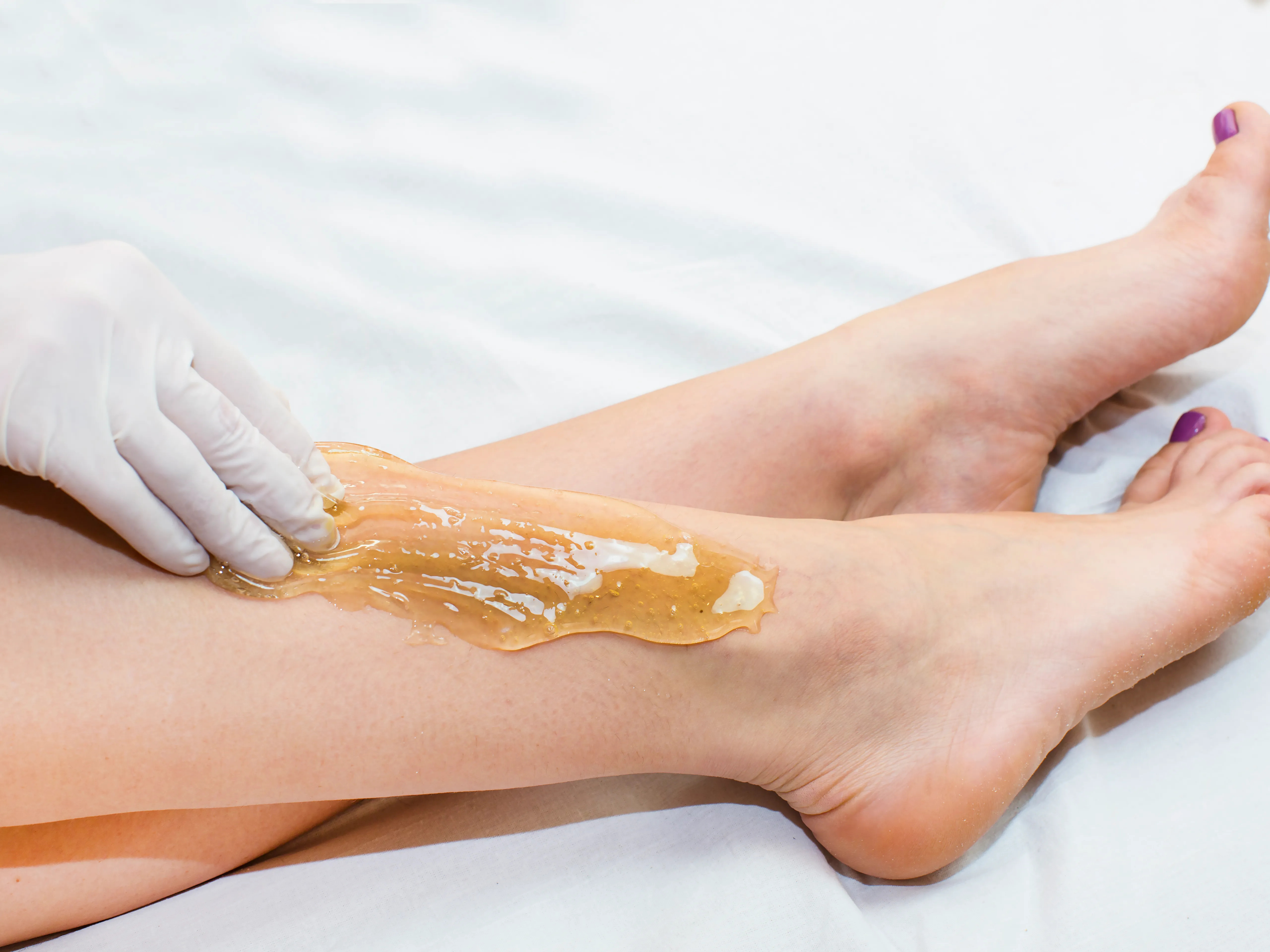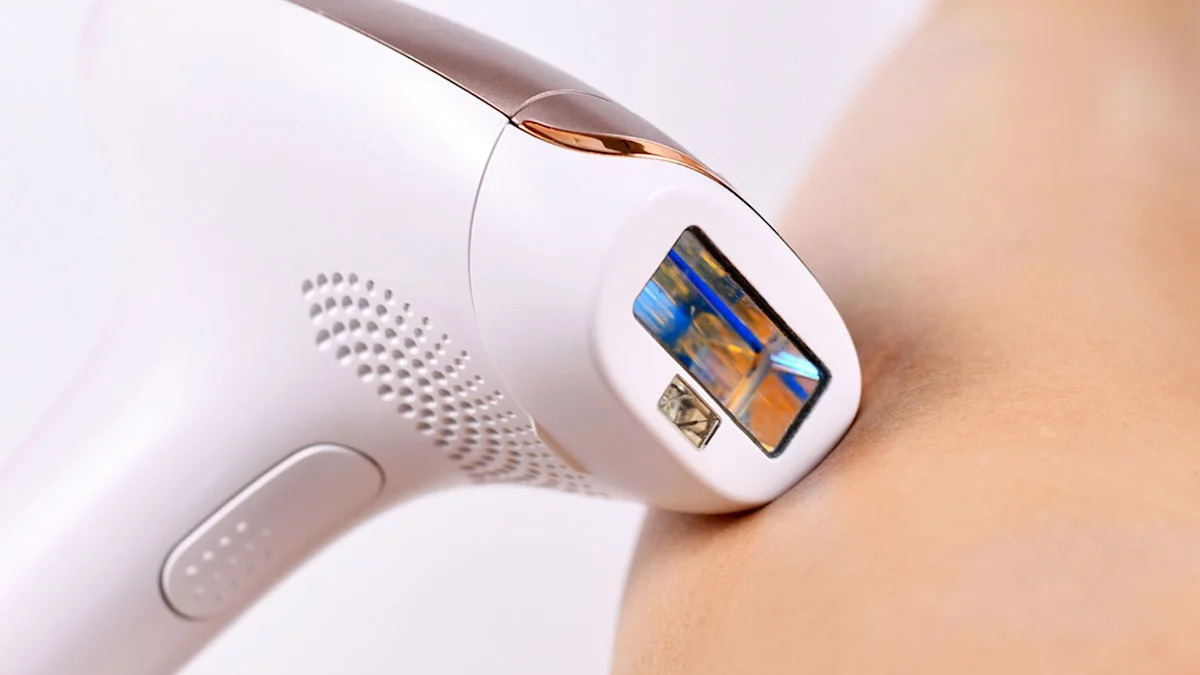

FAQs
How Do You Know If Laser Hair Removal Is Working
Modified: August 2, 2023
Wondering if laser hair removal is effective? Find out how to know if it's working and get answers to general questions about this popular hair removal method.
(Many of the links in this article redirect to a specific reviewed product. Your purchase of these products through affiliate links helps to generate commission for Under-tec.com, at no extra cost. Learn more)
Table of Contents
- Introduction
- How Does Laser Hair Removal Work?
- What to Expect During Laser Hair Removal Treatment
- Signs That Laser Hair Removal Is Working
- Factors That Can Affect the Effectiveness of Laser Hair Removal
- How Long Does It Take to See Results?
- Tips for Maximizing the Effectiveness of Laser Hair Removal
- Conclusion
Introduction
Unwanted hair can be a constant source of frustration, leading many individuals to seek a more permanent solution. Laser hair removal has gained popularity as an effective method to reduce or eliminate unwanted hair long-term. But how do you know if laser hair removal is working?
Laser hair removal targets the hair follicles with concentrated beams of light, destroying the hair from the root. The procedure is safe and has minimal side effects, making it a popular choice for both men and women looking to achieve smooth, hair-free skin. However, it’s essential to understand how the process works and what to expect during and after treatment.
In this article, we will explore the science behind laser hair removal, what you can expect during treatment, and the signs that indicate the procedure is working effectively. Additionally, we will discuss various factors that can influence the outcome of laser hair removal and provide tips on maximizing its effectiveness.
Before delving into the details, it’s important to note that laser hair removal is not a one-size-fits-all solution. While it can provide long-lasting results for most individuals, the efficacy of the treatment may vary depending on factors such as skin type, hair color, and hormonal changes.
Now, let’s dive deeper into the world of laser hair removal to understand how it works and how to determine if it’s effectively reducing unwanted hair.
How Does Laser Hair Removal Work?
Laser hair removal works by targeting the pigment, melanin, present in the hair follicles. The laser emits a concentrated beam of light that passes through the skin and gets absorbed by the melanin in the hair shaft. This absorbed light energy is converted into heat, which damages the hair follicle and inhibits future hair growth.
The effectiveness of laser hair removal is dependent on the contrast between the color of the hair and the surrounding skin. The laser can effectively target dark, coarse hairs while sparing the surrounding skin. This is why laser hair removal is most effective on individuals with light skin and dark hair.
During the treatment, a handheld device emitting the laser beam is moved over the targeted area of the skin. The duration of a session can vary depending on the size of the area being treated. Smaller areas like the upper lip or underarms can take just a few minutes, while larger areas like the back or legs may take up to an hour.
It’s important to note that laser hair removal is not a one-time procedure. Hair grows in cycles, and the laser can only target hair follicles that are in the active growth phase. As a result, multiple treatments are required to achieve optimal results.
Typically, a series of 6 to 8 sessions, spaced 4 to 6 weeks apart, is recommended for best results. This allows for targeting hair follicles at different stages of the growth cycle. Over the course of the treatments, the hair becomes finer and lighter, and the growth slows down significantly.
It’s worth mentioning that laser hair removal is a relatively comfortable procedure. Most individuals experience only mild discomfort, often described as a rubber band snapping against the skin. However, numbing creams or cooling devices can be used to minimize any potential discomfort.
Now that we understand how laser hair removal works, let’s explore the signs that indicate the procedure is effectively reducing unwanted hair.
What to Expect During Laser Hair Removal Treatment
Before you undergo laser hair removal treatment, it’s essential to have a consultation with a trained professional. During this consultation, your technician will assess your skin and hair type to determine the most suitable laser settings for your specific needs. They will also discuss your medical history and any medications you may be taking that could interfere with the treatment.
On the day of the treatment, you will be provided with protective eyewear to shield your eyes from the laser beams. The technician will apply a cooling gel or use a cooling device to minimize any discomfort during the procedure.
During the treatment, the technician will use a handheld device to deliver the laser pulses to the targeted areas. You may feel a slight warmth or tingling sensation as the laser energy is absorbed by the hair follicles. However, any discomfort is usually well-tolerated and temporary.
The duration of each session can vary depending on the size of the treatment area. Smaller areas such as the upper lip or underarms may take just a few minutes, while larger areas like the back or legs can take up to an hour.
After the treatment, you may experience some temporary redness or mild swelling in the treated area. This is a normal reaction and usually subsides within a few hours. Applying a soothing cream or ice pack can help alleviate any discomfort.
It’s important to follow the aftercare instructions provided by your technician. This may include avoiding sun exposure, hot showers, or excessive sweating for a few days after the treatment. Your technician may also recommend using sunscreen and gentle skincare products to protect and moisturize the treated area.
Remember that laser hair removal is not a one-time treatment. You will need multiple sessions to achieve the desired results. The number of sessions required can vary depending on factors such as hair type, skin color, and the treatment area.
Now that you know what to expect during laser hair removal treatment, let’s move on to the next section to learn about the signs that indicate the procedure is working effectively.
Signs That Laser Hair Removal Is Working
When undergoing laser hair removal, it’s natural to wonder if the treatment is effectively reducing unwanted hair. While individual experiences may vary, there are several signs that indicate laser hair removal is working:
- Hair growth reduction: One of the first signs that laser hair removal is working is a noticeable reduction in hair growth. As you progress through your treatment sessions, you may notice that the hair in the treated area becomes thinner, lighter, and less dense. This reduction in hair growth is a clear indication that the laser is effectively targeting the hair follicles and inhibiting their regrowth.
- Slowed hair regrowth: Another sign of the effectiveness of laser hair removal is a significant slowdown in hair regrowth. After each session, you may notice that it takes longer for new hair to appear in the treated area. This is because the laser is damaging the hair follicles, making it difficult for them to produce new hair. With each subsequent treatment, the hair regrowth becomes slower and less frequent.
- Patchy hair growth: As laser hair removal progresses, you may also notice patchy hair growth in the treated area. This occurs as certain hair follicles are permanently destroyed, leading to uneven or sparse hair growth. Over time, these patches will become more pronounced, further indicating the effectiveness of the treatment.
- Decreased ingrown hairs: For individuals prone to ingrown hairs, laser hair removal can offer relief. As the treatment targets the hair follicles, it can also reduce the occurrence of ingrown hairs. The laser destroys the hair right from the root, preventing it from curling back into the skin and causing painful bumps.
- Overall smoother skin: Laser hair removal not only reduces hair growth but also results in smoother skin. The continuous treatments help to eliminate stubble, bumps, and irritations caused by shaving or waxing. The result is soft, smooth skin that requires considerably less maintenance.
It’s important to note that each individual’s response to laser hair removal can vary based on factors such as hair type, skin color, and hormonal changes. It’s essential to follow the recommended treatment schedule and have realistic expectations regarding the outcome.
Now that we’ve explored the signs that indicate laser hair removal is working effectively, let’s move on to the next section where we discuss factors that can influence the effectiveness of the treatment.
Factors That Can Affect the Effectiveness of Laser Hair Removal
While laser hair removal is generally considered to be an effective method for reducing unwanted hair, several factors can influence the overall outcome of the treatment. It’s important to be aware of these factors and understand how they can impact the effectiveness of laser hair removal:
- Skin color and hair type: The ideal candidate for laser hair removal is someone with light skin and dark, coarse hair. The laser targets the pigment in the hair follicles, and the contrast between the hair and the surrounding skin helps to ensure effective treatment. Individuals with darker skin tones may require specialized lasers that are designed to protect the skin while still targeting the hair follicles.
- Hormonal changes: Hormonal changes can affect hair growth patterns and may impact the effectiveness of laser hair removal. Conditions like polycystic ovary syndrome (PCOS) or hormonal imbalances can lead to excessive or abnormal hair growth. In such cases, additional sessions or maintenance treatments may be necessary to manage the hair growth effectively.
- Treatment consistency: Consistency in attending scheduled treatment sessions is crucial for the success of laser hair removal. Missing or delaying sessions can disrupt the targeted hair follicles’ cycle and may require additional sessions to achieve the desired results. It’s essential to follow the recommended treatment plan to ensure optimal effectiveness.
- Sun exposure: Sun exposure can affect the outcome of laser hair removal. It’s important to avoid excessive sun exposure before and after treatment. Tanned skin is more susceptible to complications such as burns or pigment changes. It’s advisable to wear sunscreen and protective clothing when going outside and discuss sun exposure guidelines with your technician.
- Medical conditions and medications: Certain medical conditions and medications can interfere with the effectiveness of laser hair removal. Conditions such as skin disorders, herpes outbreaks, or a history of keloid scarring may require specific precautions or even be contraindications for the treatment. Additionally, some medications that increase sensitivity to light may also affect the treatment’s effectiveness.
It’s important to have a thorough consultation with a trained professional before starting laser hair removal. They will assess your specific situation and discuss any factors that may affect the treatment’s effectiveness. By understanding these factors and following the recommended guidelines, you can maximize the chances of achieving successful results.
Next, let’s explore how long it typically takes to see results from laser hair removal.
How Long Does It Take to See Results?
When undergoing laser hair removal, it’s important to have realistic expectations regarding the timeline for seeing results. While individual experiences may vary, most people start to notice a reduction in hair growth after their first few sessions.
Typically, it takes multiple sessions to achieve the desired results from laser hair removal. The exact number of sessions needed can vary depending on factors such as hair type, skin color, and the treatment area. On average, most individuals require six to eight sessions spaced four to six weeks apart to see significant hair reduction.
During the initial sessions, you may notice hair regrowth between treatments. Don’t be discouraged by this, as it is a normal part of the hair growth cycle. The laser targets hair follicles that are in the active growth phase, while others are dormant. Therefore, successive sessions are necessary to target the hair follicles as they enter the active growth phase.
As you progress through your treatments, you will likely start to see a noticeable reduction in hair growth. The hair that does grow back will be lighter, finer, and less dense. This reduction in hair growth and density is a clear sign that the laser is successfully targeting the hair follicles and slowing down their regrowth.
It’s important to note that the timeline for seeing results can vary from person to person. Factors such as hair thickness, hair color, and individual response to the treatment can influence the speed of results. Some individuals may see significant hair reduction after just a few sessions, while others may require more treatments to achieve the desired outcome.
Patience and consistency are key when it comes to laser hair removal. It’s crucial to complete the recommended number of sessions for long-lasting results. Even after completing the initial series of treatments, some individuals may require occasional maintenance sessions to keep the hair growth in check.
Remember that each session builds upon the progress made in previous sessions. By following the treatment plan and having realistic expectations, you can achieve the smooth, hair-free skin you desire.
Now, let’s move on to the next section, where we’ll discuss tips for maximizing the effectiveness of laser hair removal.
Tips for Maximizing the Effectiveness of Laser Hair Removal
Laser hair removal can be a highly effective method for reducing unwanted hair, but there are a few tips you can follow to maximize its effectiveness. By implementing these tips, you can help ensure that you achieve the best possible results from your laser hair removal treatments:
- Consult with a qualified professional: Before starting laser hair removal, it’s essential to have a consultation with a trained and experienced professional. They will assess your skin and hair type, discuss your expectations, and develop a personalized treatment plan to address your specific needs.
- Stay consistent with treatment sessions: To achieve optimal results, it’s crucial to attend all scheduled treatment sessions. Laser hair removal works best when the sessions are spaced correctly to target hair follicles in different growth phases. Skipping or delaying sessions can interrupt this process and may require additional treatments to achieve the desired outcome.
- Avoid waxing or plucking before treatment: Refrain from waxing, plucking, or any other form of hair removal that removes the hair from the follicle before your laser hair removal treatment. The laser targets the hair follicle, so there needs to be some hair present for the treatment to be effective.
- Avoid sun exposure: Sun exposure can make the skin more sensitive and increase the risk of complications during laser hair removal. It’s important to avoid sun exposure, tanning beds, and self-tanning products before and after your treatment sessions. If you are going outside, use sunscreen with a high SPF and protect the treated area with clothing or a hat.
- Moisturize and protect your skin: Keeping your skin well-moisturized and protected is essential during laser hair removal. Use gentle, fragrance-free moisturizers to keep your skin hydrated and prevent dryness or irritation. Additionally, protect the treated area from harsh environmental factors, such as extreme cold or heat.
- Follow post-treatment care instructions: After each laser hair removal session, your technician will provide you with specific post-treatment care instructions. These may include avoiding hot showers, intense exercise, or exposing the treated area to excessive heat. Following these instructions will help to minimize any potential side effects and promote optimal healing.
- Communicate and update your technician: Throughout the course of your laser hair removal treatments, it’s important to communicate openly with your technician. Inform them of any changes in your medical history, medications, or lifestyle that may impact the treatment. This will ensure that they can make any necessary adjustments to optimize the effectiveness of the treatment.
By following these tips, you can maximize the effectiveness of your laser hair removal treatment and achieve the best possible results. Remember to consult with a qualified professional for personalized advice and to adhere to the recommended treatment plan.
Now that you’re equipped with these tips, you can confidently embark on your laser hair removal journey and enjoy the benefits of smooth, hair-free skin.
Conclusion
Laser hair removal is a popular and effective method for reducing unwanted hair and achieving smooth, hair-free skin. By understanding how laser hair removal works, what to expect during the treatment, and the signs that indicate its effectiveness, you can make informed decisions and have realistic expectations regarding the results.
During laser hair removal treatment, the laser targets the pigment in the hair follicles, inhibiting their growth and resulting in reduced hair density. As the sessions progress, you may notice thinner, lighter, and slower regrowth of hair in the treated areas. This is a positive indication that the treatment is effectively reducing unwanted hair.
Several factors can influence the effectiveness of laser hair removal, including skin color, hair type, hormonal changes, and treatment consistency. It’s important to consult with a qualified professional and follow their recommendations for optimal results.
Remember that laser hair removal is not a one-time treatment, and multiple sessions are typically required to achieve the desired outcome. The exact number of sessions will vary depending on individual factors and the treatment area. Patience and commitment to the treatment schedule are key to seeing long-lasting results.
To maximize the effectiveness of laser hair removal, it’s recommended that you maintain open communication with your technician, adhere to post-treatment care instructions, and follow the tips provided. By doing so, you can enhance the overall effectiveness of the treatment and enjoy smoother, hair-free skin.
Now that you have a comprehensive understanding of laser hair removal and how to determine its effectiveness, you can confidently embark on your laser hair removal journey and say goodbye to the hassle of unwanted hair. Consult with a qualified professional, set realistic expectations, and enjoy the long-lasting benefits of smooth, hair-free skin.










